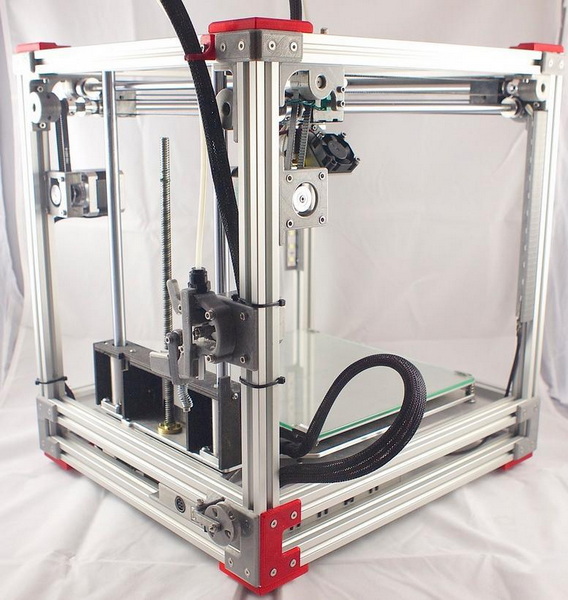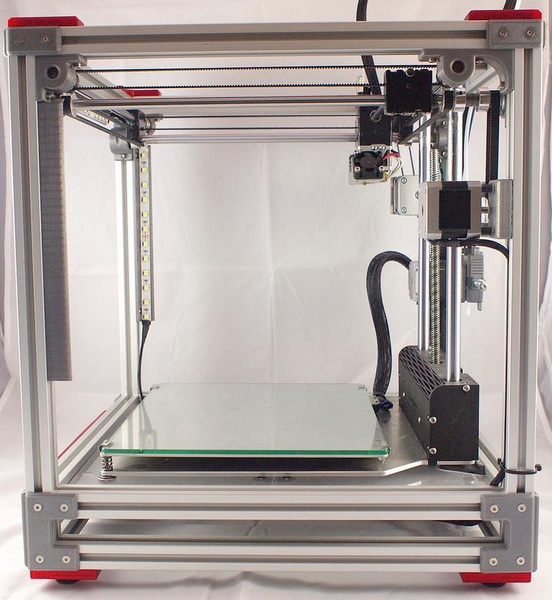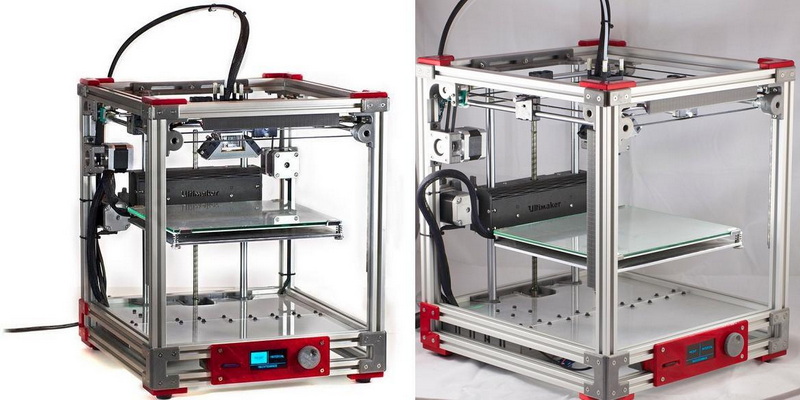Content Menu
● Understanding 3D Printing and Aluminum Extrusion
>> What is 3D Printing?
>> What is Aluminum Extrusion?
● The Benefits of Combining 3D Printing and Aluminum Extrusion
>> Enhanced Design Flexibility
>> Lightweight Structures
>> Cost-Effectiveness
>> Rapid Prototyping
>> Customization
● Practical Applications of 3D Printing and Aluminum Extrusion
>> Robotics and Automation
>> Aerospace Components
>> Custom Furniture
>> Medical Devices
>> Automotive Parts
● Challenges and Considerations
>> Material Compatibility
>> Design Complexity
>> Cost of Equipment
● Conclusion
● Frequently Asked Questions
>> 1. What are the main advantages of combining 3D printing and aluminum extrusion?
>> 2. In which industries is this combination most beneficial?
>> 3. What challenges should manufacturers consider when integrating these technologies?
>> 4. How does this combination improve the prototyping process?
>> 5. Can this combination lead to more sustainable manufacturing practices?
In recent years, the intersection of 3D printing and aluminum extrusion has opened up new avenues for innovation in manufacturing and design. This combination allows for the creation of custom solutions that leverage the strengths of both technologies. In this article, we will explore how these two methods can be integrated, the benefits they offer, and practical applications across various industries.

Understanding 3D Printing and Aluminum Extrusion
What is 3D Printing?
3D printing, also known as additive manufacturing, is a process that creates three-dimensional objects from a digital file. This technology builds objects layer by layer, allowing for complex geometries and designs that would be difficult or impossible to achieve with traditional manufacturing methods. Various materials can be used in 3D printing, including plastics, metals, and ceramics. The versatility of 3D printing makes it an ideal choice for prototyping and producing custom parts.
What is Aluminum Extrusion?
Aluminum extrusion is a manufacturing process that involves forcing aluminum alloy through a die to create a specific cross-sectional shape. This method is widely used due to aluminum's lightweight, strength, and corrosion resistance. Extruded aluminum can be found in various applications, from structural components in buildings to frames for machinery and equipment. The ability to create long lengths of uniform cross-sections makes aluminum extrusion a popular choice for many industries.
The Benefits of Combining 3D Printing and Aluminum Extrusion
Enhanced Design Flexibility
One of the primary advantages of combining 3D printing with aluminum extrusion is the enhanced design flexibility it offers. Designers can create intricate parts that are tailored to specific applications. For instance, 3D printing can be used to produce complex brackets or connectors that fit perfectly with extruded aluminum profiles, allowing for customized assembly solutions. This flexibility enables engineers to innovate without the constraints typically associated with traditional manufacturing processes.
Lightweight Structures
Both 3D printing and aluminum extrusion contribute to the creation of lightweight structures. Aluminum is known for its high strength-to-weight ratio, and when combined with 3D printed components, it can lead to even lighter assemblies. This is particularly beneficial in industries such as aerospace and automotive, where reducing weight can significantly impact performance and fuel efficiency. Lightweight structures not only improve efficiency but also enhance the overall performance of the final product.
Cost-Effectiveness
Integrating 3D printing with aluminum extrusion can lead to cost savings in several ways. First, the ability to produce custom parts on demand reduces the need for large inventories of standard components. Additionally, 3D printing can minimize material waste, as it only uses the material necessary to create the part. This efficiency can lower production costs and lead to more sustainable manufacturing practices. Furthermore, the reduction in lead times associated with 3D printing can also contribute to overall cost savings.
Rapid Prototyping
The combination of these technologies allows for rapid prototyping, enabling designers to quickly iterate on their designs. 3D printing can be used to create prototypes of components that can then be tested for fit and function with extruded aluminum parts. This rapid feedback loop accelerates the design process and helps bring products to market faster. The ability to test and refine designs quickly is a significant advantage in today's fast-paced manufacturing environment.
Customization
In today's market, customization is key. The ability to create bespoke solutions tailored to specific customer needs is a significant advantage. By using 3D printing to produce unique components that integrate seamlessly with aluminum extrusions, manufacturers can offer personalized products that stand out in a competitive landscape. This level of customization can enhance customer satisfaction and loyalty, as clients receive products that meet their exact specifications.

Practical Applications of 3D Printing and Aluminum Extrusion
Robotics and Automation
In the field of robotics, the combination of 3D printing and aluminum extrusion is particularly powerful. Custom robotic arms and frames can be designed using 3D printing, while the structural components can be made from extruded aluminum. This allows for lightweight, durable robots that can be tailored for specific tasks, enhancing efficiency in manufacturing and logistics. The ability to create specialized robotic solutions can lead to improved productivity and reduced operational costs.
Aerospace Components
The aerospace industry is increasingly adopting additive manufacturing techniques to produce lightweight components. By combining 3D printed parts with aluminum extrusions, manufacturers can create complex structures that meet stringent weight and strength requirements. This integration is crucial for developing aircraft that are both efficient and capable of withstanding harsh conditions. The aerospace sector benefits significantly from the ability to produce parts that are not only lightweight but also highly durable.
Custom Furniture
The furniture industry is also benefiting from this combination. Designers can create unique furniture pieces that incorporate both 3D printed elements and aluminum frames. This approach allows for innovative designs that are not only aesthetically pleasing but also functional and durable. Custom furniture solutions can cater to specific customer preferences, making them more appealing in a competitive market.
Medical Devices
In the medical field, custom solutions are often required for devices and equipment. 3D printing can be used to create patient-specific components, while aluminum extrusion provides the necessary structural integrity. This combination can lead to the development of advanced medical devices that improve patient outcomes. The ability to produce tailored medical solutions can enhance the effectiveness of treatments and improve overall patient care.
Automotive Parts
The automotive industry is another area where this combination shines. Custom brackets, mounts, and housings can be produced using 3D printing, while the main structural components can be made from extruded aluminum. This not only reduces weight but also allows for faster production times and lower costs. The integration of these technologies can lead to the development of innovative automotive solutions that enhance performance and efficiency.
Challenges and Considerations
While the integration of 3D printing and aluminum extrusion offers numerous benefits, there are also challenges to consider.
Material Compatibility
Not all materials used in 3D printing are compatible with aluminum extrusion. It is essential to select materials that can withstand the mechanical and thermal stresses involved in the extrusion process. Ensuring compatibility between materials is crucial for the success of any project that combines these technologies.
Design Complexity
While 3D printing allows for complex designs, it is crucial to ensure that these designs can be effectively integrated with extruded aluminum components. Designers must consider the manufacturing processes of both technologies to create parts that fit together seamlessly. This requires a deep understanding of both 3D printing and aluminum extrusion processes.
Cost of Equipment
Investing in both 3D printing and aluminum extrusion equipment can be costly. Companies must weigh the benefits against the initial investment and ongoing operational costs. A thorough cost-benefit analysis can help determine whether the integration of these technologies is a viable option for a particular business.
Conclusion
The combination of 3D printing and aluminum extrusion presents exciting opportunities for innovation across various industries. By leveraging the strengths of both technologies, manufacturers can create custom solutions that are lightweight, cost-effective, and tailored to specific needs. As these technologies continue to evolve, we can expect to see even more creative applications and advancements in manufacturing.

Frequently Asked Questions
1. What are the main advantages of combining 3D printing and aluminum extrusion?
The main advantages include enhanced design flexibility, lightweight structures, cost-effectiveness, rapid prototyping, and customization.
2. In which industries is this combination most beneficial?
This combination is particularly beneficial in industries such as aerospace, automotive, robotics, medical devices, and furniture design.
3. What challenges should manufacturers consider when integrating these technologies?
Manufacturers should consider material compatibility, design complexity, and the cost of equipment.
4. How does this combination improve the prototyping process?
It allows for rapid prototyping, enabling quick iterations and testing of designs, which accelerates the overall development process.
5. Can this combination lead to more sustainable manufacturing practices?
Yes, by reducing material waste and the need for large inventories, this combination can contribute to more sustainable manufacturing practices.






















